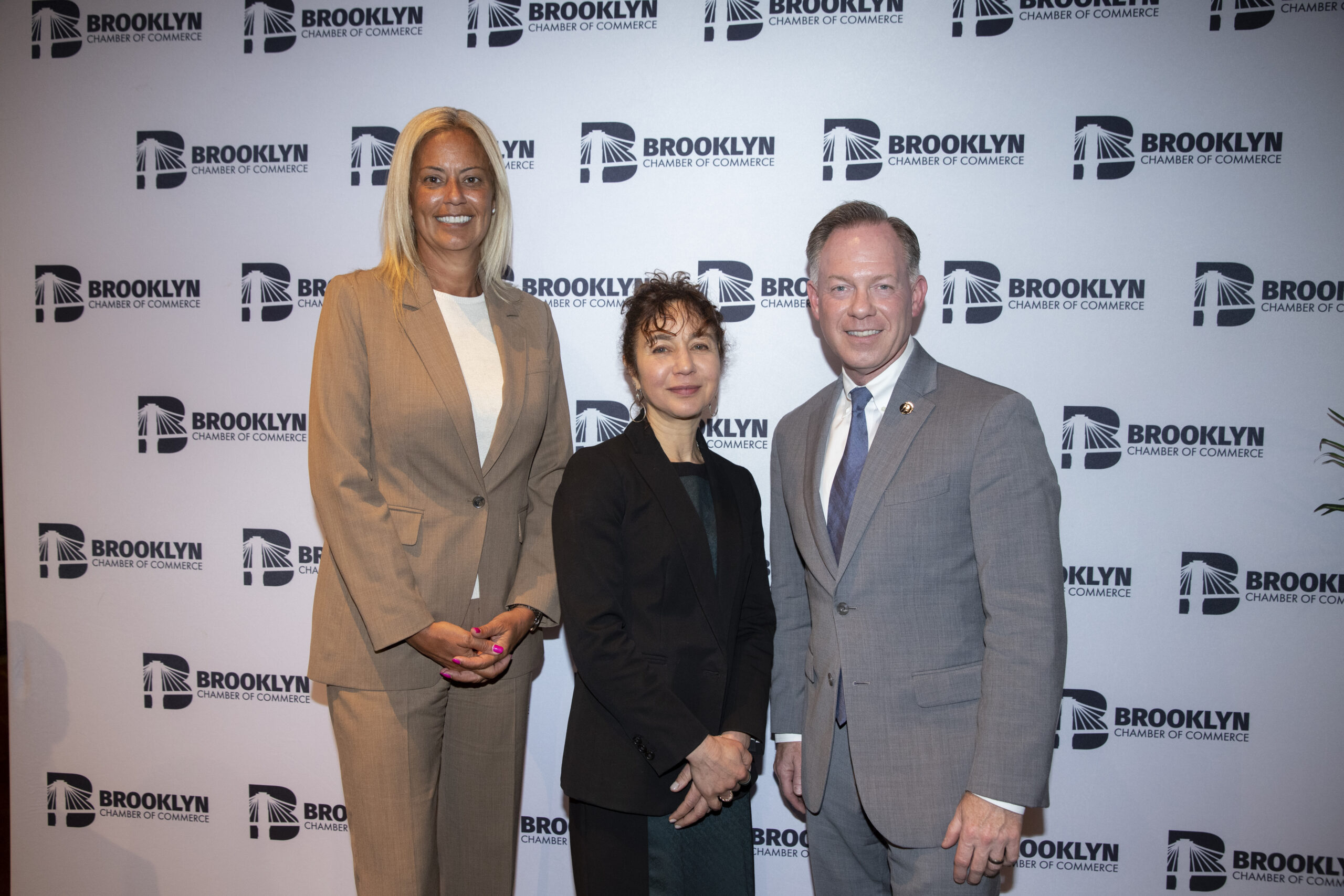Breakfast seminar boosting commerce highlights Adams’ infrastructure agenda
Sweeping initiatives in business, transportation presented by Brooklyn Chamber of Commerce

WILLIAMSBURG — Each year, billions of gallons of water pass through New York City’s taps and toilets. Twelve thousand tons — or the weight of nearly 150 Boeing 737 aircraft of trash and recycling – are cleared from the City’s streets. While rarely grabbing sexy headlines, the nuts and bolts of operating and improving the city are mind-boggling. And in the Adams Administration, spearheading these responsibilities often falls on the shoulder of Deputy Mayor Meera Joshi.
On Tuesday, Deputy Mayor Joshi joined Brooklyn Chamber of Commerce President, Randy Peers, and nearly 100 movers and shakers of the Brooklyn business community at the Chamber’s Economic Development breakfast at the Wythe Hotel in Williamsburg. In front of an eager and receptive crowd, Joshi set the stage for her remarks with an aspirational framing for her work, that while infrastructure is often overlooked, it is the “foundation for security for people to follow their dreams”. And from her purview at City Hall, she oversees agencies responsible for everything from school construction to filling potholes at such an immense scale, that a change in policy on NYC’s streets quite literally can change the world.
Joshi took on one the hardest topics in Brooklyn first, the City’s plans for the rehabilitation of what she described as “the highway of horror” and the “Big Ugly” — the Brooklyn-Queens Expressway. Particularly the Triple Cantilever section of the highway which runs underneath the Brooklyn Heights Promenade. Already serving long past its intended useful life, the BQE Cantilever has been studied by City and State agencies for rehabilitation since 2006. It is the most monitored highway in the region according to Joshi, and the Adams Administration, noting the public’s lack of patience with the government in the wake of the Covid pandemic, plans to take action to address the longstanding highway issue.
